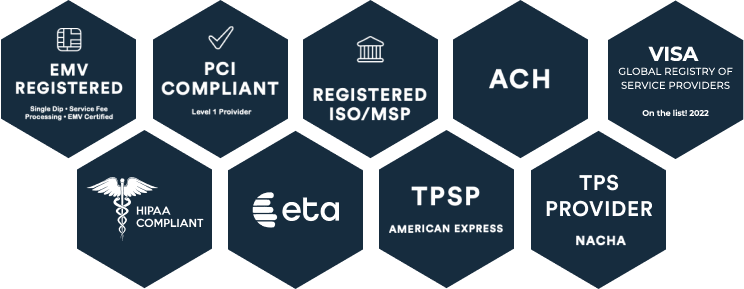City and county government institutions bear the responsibility of careful management—and protection—of public funds. With secure payment systems in place, your institutions can bolster stewardship of public resources, ensuring funds are used effectively and for their intended purpose.
Still, payment fraud is a concern in every sector, and the stakes for government organizations are especially high. Misappropriated tax dollars significantly erode public trust and confidence in government institutions, leading to skepticism, disengagement from civic processes, and even legal consequences.
The solution: robust government fraud detection mechanisms for payment systems. Here’s what compliance managers and auditors need to know to strengthen internal fraud prevention and safeguard public funds.
The Landscape of Payment Fraud in City and County Governments
Fraudulent activity, no matter the scheme or tactic by which it happens, can result in major financial losses. Not only do these losses impact the community at large, but payment fraud can also significantly undermine the integrity of local government operations for years.
3 Prevalent Types of Government Payment Fraud
Government fraud detection and prevention begins with understanding the primary ways in which payment fraud occurs: vendor payments, payroll, and procurement.
1. Vendor Payment Fraud
City and county governments often enter into contracts with third-party vendors or contractors who provide goods or services. Vendor payment fraud occurs when these transactions include inflated invoices, bills for goods or services that were not provided, or collusion with government employees to collect unauthorized payments.
2. Payroll Fraud
Instances where government employees manipulate payroll for financial gain constitute payroll fraud. Payroll fraud can involve falsified timesheets or misclassified employees who receive higher wages or additional benefits.
3. Procurement Fraud
Fraud in the procurement process encompasses any unethical financial practices carried out or facilitated by government employees that relate to the acquisition of goods or services. Procurement fraud can include kickbacks, bid rigging, or conflicts of interest between government employees and vendors.
The Real-World Impact of Government Payment Fraud
Governments experience a higher average loss than corporate entities, and local governments lose more than twice as much as state governments on average.
Fraudulent activity can very often occur under the radar. The International City/County Management Association reports:
“Half of all fraud cases are committed by a long-term trusted employee (25% with more than six years of employment and 20% with more than 10 years).”
According to the Association of Certified Fraud Examiners, half of all fraud cases in government settings occur due to:
- Lack of effective internal fraud prevention controls
- Overriding existing controls without detection
In 2021, asset misappropriation represented 86% of all fraud cases, with a median loss of $100,000. When fraud persists for over five years, the average loss increases to $800,000.
This underscores the importance of enhanced safety and security in government payment processes.
Common Challenges in Government Payment Fraud Detection
Payment fraud, especially when perpetrated by internal employees or officials, poses a challenge to detection for a number of reasons, including obstacles in processes, resources, monitoring, and capabilities.
1. The Intricacies of Government Payment Processes
Government payment processes often involve several departments, agencies, and stakeholders. There are various transactions that occur, each governed by different regulatory bodies, including:
- Benefits
- Payroll
- Procurement
- Reimbursements and refunds
- Vendor payments
The number and complexity of these processes can make it difficult to detect anomalies that point to fraudulent activity.
2. Lack of Continuous Transaction Monitoring Capabilities
Real-time monitoring is a powerful tool for prompt detection of government payment fraud. However, local governments often lack continuous transaction monitoring capabilities.
Without the technology to monitor transactions continuously, it’s more likely that fraudulent activities will go unnoticed for extended periods of time—and losses to government financial systems will accumulate.
3. Resource and Budget Limitations
Budget constraints can prohibit investment in advanced technologies, training, or personnel dedicated to internal fraud prevention and detection. Competing priorities can also divert resources that may have been dedicated to fraud detection toward other efforts.
Whether resource limitations are a result of budgetary pressures or lack of urgency around the issue of fraud, inadequate safeguards leave local governments vulnerable to fraud schemes both sophisticated and rudimentary.
4. Reliance on Manual Processes
Many local governments still rely on manual payment processes, which are prone to human error even without intentional manipulation. Manual payment processing typically lacks sufficient controls when it comes to documentation or audit trails, making it challenging to detect fraudulent transactions.
When fraudulent activity is suspected, manual processes can also take more time to review or apply standardized fraud detection across different teams and transactions. These delays could allow fraud schemes more time to exploit potential vulnerabilities. Additionally, they increase the risk of non-compliance penalties.
Strategies for Effective Government Payment Fraud Detection
Despite the challenges in the detection and prevention of government payment fraud, proactive measures and strong internal controls promote accountability and financial integrity.
These strategies, particularly when used in tandem, have the power to significantly bolster government fraud detection for payment systems.
Implementing a Secure, Transparent Payment Platform
A secure payment platform provides enhanced transparency for individual transactions and the revenue cycle as a whole. With robust security measures, these platforms are well-equipped with automated features to flag unauthorized transactions or misappropriation of funds.
A secure payment platform can further strengthen government fraud detection efforts by:
- Enhancing transaction security through multi-factor authentication
- Using data analysis to identify anomalies
- Reducing manual intervention in payment processes
- Enabling real-time alerts to identify suspicious transactions
For online payment fraud prevention efforts, these features work comprehensively in the digital space to allow continuous tracking and secure payment processing.
Leveraging Data Analytics and Anomaly Detection
Unusual patterns are a significant fraud indicator. By utilizing data analytics tools, local governments can quickly identify these discrepancies and intervene with additional internal fraud prevention mechanisms to quickly stop fraudulent activity.
These tools support fraud detection in payment systems with:
- Analysis of large datasets
- Advanced algorithms and machine learning techniques
- Real-time monitoring systems
- Instantaneous alerts and notifications
- Regular audits and reviews of transaction data
With automated anomaly detection, local governments can mobilize investigation and intervention the moment suspicious activities occur.
Strengthening Internal Controls and Segregation of Duties
Internal fraud prevention relies on strong internal controls. Effective policies and procedures to encourage reporting and ownership of fraud detection can include:
- Clear delineation of roles and responsibilities
- Regular rotation of financial duties
- Confidential reporting systems
- Regular internal audits
- Collaboration with external regulatory bodies
With strong procedures and segregated roles, local governments can create checks and balances that increase internal accountability.
Employee Awareness and Training Programs
Vigilant personnel are more likely to recognize red flags and report suspicious activities. However, they need to know what to look for.
With training and education, employees can take an active role in government payment fraud detection. These training programs should cover topics such as:
- Awareness of each stage of the revenue cycle, whether the employees are directly involved or not
- Compliance, regulations, and legal requirements for ethical fund management
- Fraud prevention best practices and the importance of internal prevention
- Recognizing common fraud schemes and tactics
- Using proper reporting channels
These training programs should be ongoing and can also provide guidance on ethical decision-making and the importance of accountability in the management of taxpayer funds. A PCI compliance checklist is a good place to start.
Conducting Due Diligence on Vendors and Suppliers
When working with vendors and suppliers, verifying their legitimacy can reduce the risk of entering into contracts with entities that could attempt to defraud payment processes. When conducting due diligence, local governments should:
- Verify the vendor’s license and accreditation
- Review the vendor’s financial history
- Perform background checks
- Request references from previous clients
- Assess the vendor’s compliance with legal regulations
In addition, it’s crucial to establish clear contract terms around payments, deliverables, and dispute resolution to mitigate fraud risk at the outset.
Protecting Payments with Local Government Fraud Detection
Proactive efforts to strengthen payment fraud detection and prevention help safeguard public funds and public trust. For compliance managers and auditors, diligence and oversight are essential aspects of the role—and important for ensuring adherence to regulations, policies, and best practices.
By effectively implementing strategies to detect government payment fraud, local officials can minimize financial losses and, ultimately, foster public confidence in their civic institutions.
Powerful Internal Fraud Prevention with CORE
City and county governments must take strong precautions against payment fraud. CORE’s secure payment platform protects government payments with advanced tools and security strategies, including:
- Access controls
- Automated reconciliation features
- Data encryption
- Custom reporting and analytics
- PCI compliance solutions
- Real-time audit visibility
- Transparent, up-to-date management systems
- User-friendly interfaces
By partnering with CORE, governments gain access to comprehensive protections to preserve the integrity of the vital public services they provide.






